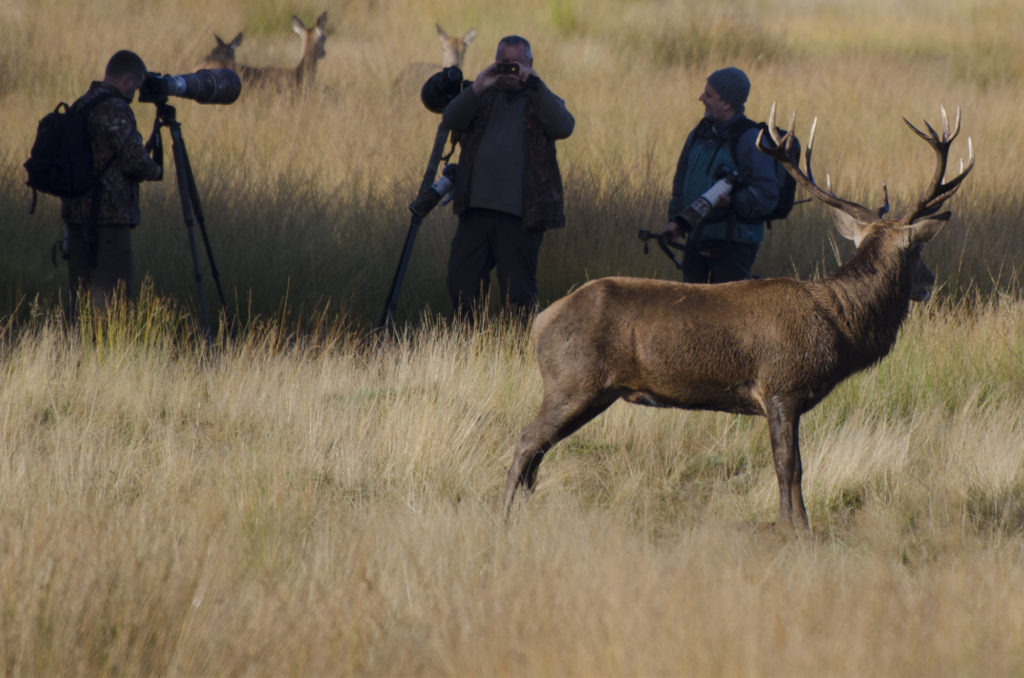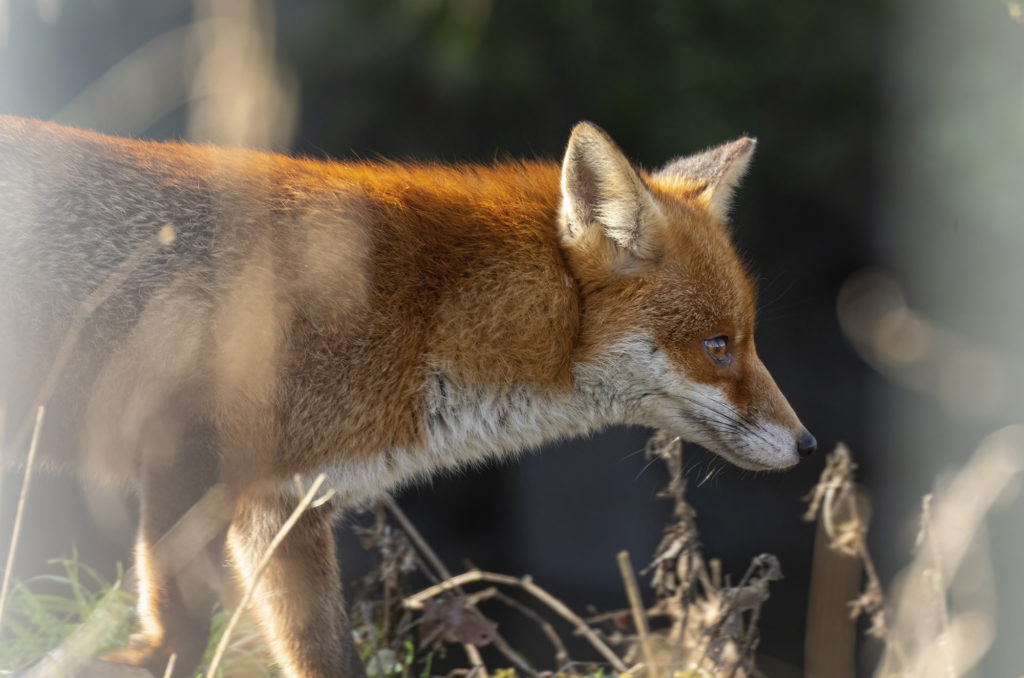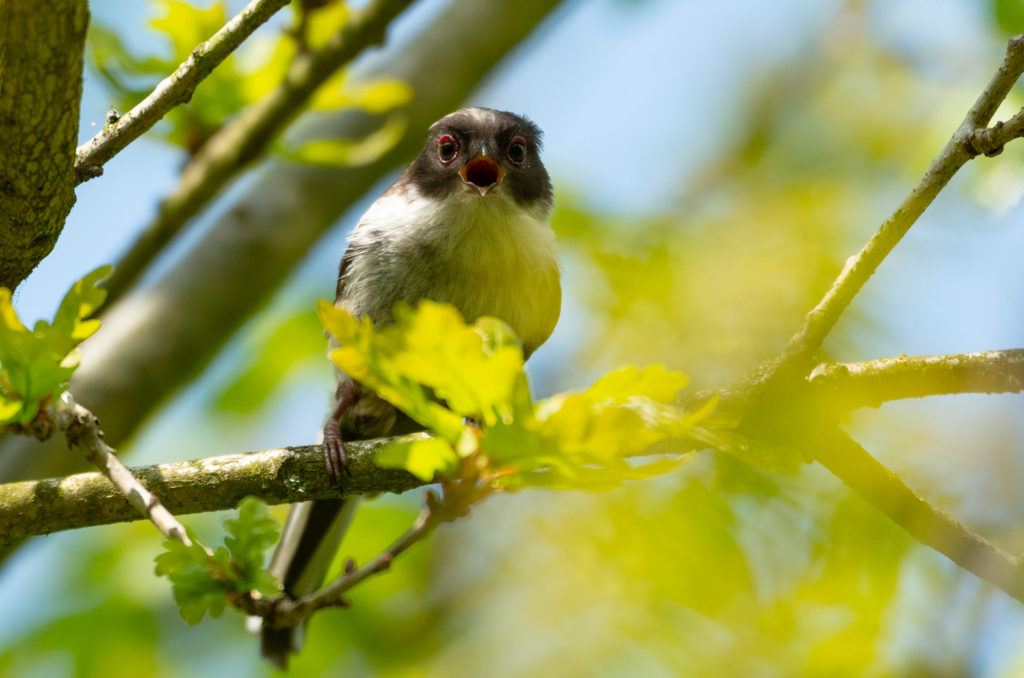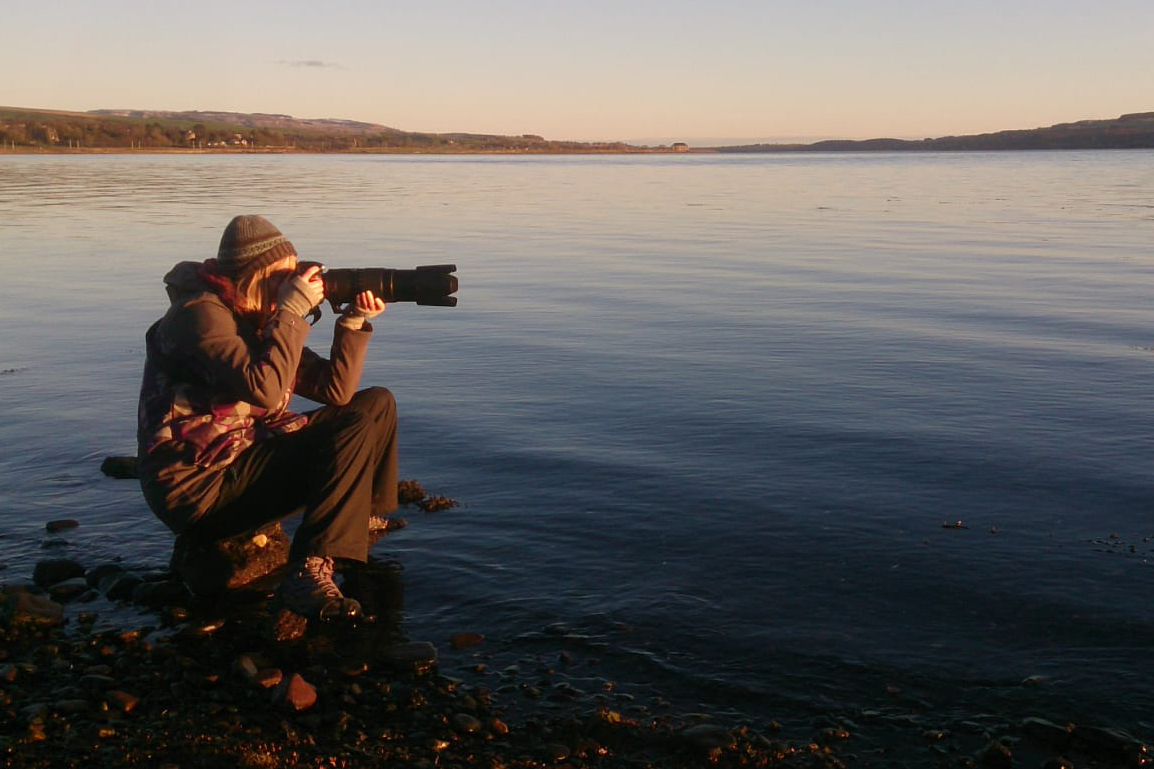I opened up a new document on my phone a little over a year ago and typed at the top: Why are there fewer women wildlife photographers than men? It was International Women’s Day, a missing woman was front-page news and, as the questions around women and wildlife photography had been floating around my head for a long time, I thought it would be as good a time as any to start addressing them. I jotted down a few ideas and shared a post on the SheClicks Facebook group to ask other female photographers what they thought. More notes.
Then the body found in Kent woodland was confirmed as Sarah Everard’s. I closed that document and did not reopen it. The limitations for women taking part in activities like wildlife photography felt secondary to the raw reinforcement that we can’t even risk walking home alone.
On International Women’s Day this year, I decided to reopen those notes. It is hard to reflect on the lack of female wildlife photographers without drawing on my own experiences. As a child, I watched men presenting all of my favourite wildlife programmes, except for the infectious enthusiasm of Michaela Strachan on the Really Wild Show. Despite adoring the natural world, I didn’t realise wildlife photography was something you could have as a career. In the 1980s, wildlife photos were found in unaffordable books and proper cameras were heavy, complicated items that I stood even less chance of ever being able to afford.
I took up wildlife photography in my spare time just before turning thirty. At a point where I could afford to, not just in terms of purchasing equipment and paying for my travel to locations but also concerning being able to fit it in around other life commitments. Maybe if I had taken up photography in my teens, it could have been added to the career wishlist. Instead, I will always be a keen amateur, which is the type of photographer I have aimed this post at; those struggling to find 3 hours to dedicate to photography rather than planning a 3-week shoot in one location.
I have read interesting perspectives from professional female photographers, such as Nancy Elwood and Melissa Groo, on why there are so few women taking up wildlife photography as a career. I have not seen anything said about what is holding back the amateurs and what we can do to change that.
The clock is ticking
I guess I should first address how I believe the experience of being a female amateur wildlife photographer differs from the experiences of my male counterparts.
Time – and working out how to make the most of it – is a constant consideration. But this isn’t a situation unique to women; many people have family, work or other commitments. That said, although I don’t have children, I can understand the frustration of being advised to head out during the golden hour when you are trying to get ready for the school run or get your kids fed.
It is wrong to generalise by indicating that it is only women that look after children, but a fellow photographer commented:
“I am tied to the kids’ routines, meaning that I miss sunset, sunrise and overnight as I have to be home being mum. Most of the men who are out all hours either don’t have partners/commitments or very understanding families.”
Equipping yourself – mentally and physically
Once you block out that bit of time in the diary to get out with your camera, you may then have to contend with imposter syndrome; that feeling that, despite going to all the effort to be at the location, you shouldn’t be there. Maybe you just feel self-conscious, which can be particularly problematic if you are the only woman in a location.
Anna told me:
“I also think I’m more apologetic than the men around me, I don’t want to be a pain, etc. But when I’m just with women I have a lot more confidence.”
Jill noted:
“I go out each year to photograph the deer rut. Male photographers outnumber females big time”.

Julie said:
“I love wildlife photography but find that as it is predominantly men with big lenses and in camouflage gear, I feel a little self-conscious. They usually have a couple of cameras, big lenses, tripods and seem to know each other so I then stand back on the periphery more than I usually would”.
I have learnt to be less apologetic and self-conscious about my technique and gear, particularly in hides with other people, but it has taken a lot of time.
And while we are on the subject of equipment, there is the weight issue when trying to handle a heavy DSLR and long lens combination.
Melanie told me that, for her:
“It’s a physical thing. As much as I love wildlife photography, I cannot carry a very large lens and all the trimmings anymore”.
Mirrorless systems will hopefully help with this in the future but, while secondhand DSLR bodies and lenses can be bought at a discount, the newer systems often have price points that many people can’t afford or justify for a ‘hobby’.
Safety first
Despite everything I have noted above, there is one issue that sticks in my head whenever I think about how being a woman has affected my ability to photograph wildlife. It is the reason I have abandoned projects on certain species. It is the reason I have run, fully laden with camera gear, down a path in rural Hertfordshire in the middle of a heatwave. And it is the reason I hit pause on writing this blog for over a year. Vulnerability.
Like many women, my safety is in my thoughts a lot. This sense of vulnerability became more of an issue when I started carrying around an expensive piece of kit and was thinking about which species to photograph.
When I lived in south London years ago, urban foxes seemed like the perfect project for a budding wildlife photographer to get stuck into; you know that they live on your doorstep and are used to people and I have always adored foxes. Still, I held back from embarking on a fox project and stuck to corvids instead.
I didn’t want to admit it to anyone – or myself – at the time, but I was scared. Although it is not unusual to see foxes during the day, particularly in urban areas, foxes are crepuscular, meaning they are most active around dawn and dusk. I didn’t feel comfortable wandering around the streets with only my camera for company, especially after dark. I was worried about my safety and my gear getting taken from me or damaged. I also had no idea where to start in terms of a reliable location and knew that questions might be asked about a woman spotted snooping up and down near people’s homes at any time of day or night. It felt like too much could go wrong, so I parked the idea.
I am incredibly lucky to now live close to foxes that are more active and visible during the day.

Not everyone is so lucky. If you want to photograph tawny owls and you can’t get out after dark with your camera, you are stuffed.
Caroline summed it up when she said:
“Women are less confident to be in remote places on their own. Society has succeeded in making us all nervous about risks, which are in reality fairly low in most areas. I much prefer my own company and choose quiet places, but there are definitely places I won’t go alone”.
Wildlife photography for many people is a solitary endeavour and, unsurprisingly, safety came up in many of the comments I received from fellow photographers. So, let’s move away from how we feel and look at the figures for a moment.
The stats on safety
The Office for National Statistics published a statistical bulletin in August last year on Perceptions of personal safety and experiences of harassment. It found that:
- One in two women and one in seven men felt unsafe walking alone after dark in a quiet street near their home.
- One in two women and one in five men felt unsafe walking alone after dark in a busy public place.
- Four out of five women and two out of five men felt unsafe walking alone after dark in a park or other open space.
- Disabled people felt less safe walking alone in all settings than non-disabled people.
- Adults who experienced at least one form of harassment in the previous 12 months were more likely to feel unsafe when walking alone compared with those who had not.
- Two out of three women aged 16 to 34 years experienced one form of harassment in the previous 12 months; with 44% of women aged 16 to 34 years having experienced catcalls, whistles, unwanted sexual comments or jokes, and 29% having felt like they were being followed.
- Some 6 out of 10 people who reported feeling unsafe during the day, and 4 out of 10 who reported feeling unsafe after dark, had altered their behaviour, as a result, in the previous month.
These findings led Nick Stripe, Head of Crime Statistics Branch at the Office for National Statistics, to comment:
“This is the first time the ONS has asked people about feelings of personal safety when walking alone in different public settings. We explored how those feelings are influenced by personal experience of harassment and if they affected behaviours. There are some clear findings: Men and women both feel less safe after dark, but the extent to which women feel unsafe is significantly greater. Disabled people, too, are more likely to feel unsafe, even in the daytime in busy public places.”
The Glasgow Centre for Population Health engaged with over 600 women and non-binary people about their experiences of public space in Glasgow and found that:
- 95% felt unsafe visiting parks at night.
- 70% don’t always feel safe when they are waiting for public transport.
- 67% often felt unsafe or uncomfortable on buses.

How does this relate to my points above? Firstly, these findings clearly show that women feel uncomfortable being alone outside after dark – in both quiet places and public spaces. So, it is easy to see why a woman may feel even more uncomfortable hanging around alone somewhere in the dark while carrying expensive camera equipment. There is also evidence of issues during the daytime and using public transport. All of these factors could limit a woman’s ability to use specific locations and photograph particular species, such as nocturnal wildlife.
The future
When you go to the Women in wildlife photography page on the Natural History Museum website, one of the first sentences you read is:
“Far fewer women than men enter the Wildlife Photographer of the Year competition, let alone win the grand title”.
As gloomy as this statement sounds, the future feels brighter. The young WPOTY competition generally sees a higher entry rate among girls – nearly 40% of young competition entrants compared with just over 20% in the adult categories.
I can only assume that this positive shift is due to:
- Cameras and equipment becoming more accessible (it’s much easier to have a go at photography if you have a camera built into your phone).
- Digital channels that allow stunning wildlife photography to be shared widely.
- Finally, and most importantly, the new wave of female naturalists, scientists, photographers and presenters who have a voice on channels from the BBC to TikTok.
I also believe that producers, editors and awards organisers are waking up to the current inequalities in the system.
Wild women do’s
And that’s all great, but what action can the rest of us take to change the situation and encourage women – and other groups that feel pushed out of this space – to pick up a camera and head to their local beauty spot?
Here are a few of my ideas:
- Join online and in-person groups like SheClicks and Creative Women Birders. These are safe spaces to share knowledge, tips, encouragement and, in some cases, meet in person. For many of us, wildlife photography is a solitary activity, but we now have virtual communities where we can share our passion with others.
- Be supportive of others – particularly young women and anyone else who you feel may be discouraged and disheartened when out exploring nature. It may be a huge confidence boost for a teenage female wildlife photographer to get a new follower on Instagram or a young person from an ethnic minority community to be welcomed in a hide at a nature reserve. Share the love – this is not only how we help others but also how we promote nature. The more people who care about it, the more people want to save it.
- Resist feelings of embarrassment, fight imposter syndrome and assume nothing. I recently searched for a ring-billed gull wintering on a local loch. While looking for it, my partner suggested we approach a male photographer to ask if he had seen it, and I resisted. My reasoning was I would feel embarrassed, but my gut told me I was about to be subjected to mansplaining. The photographer in question actually approached us as we walked past and was lovely and supportive and I, rightly, felt like an idiot for making assumptions about him.
- Do whatever you need to do to feel (and be) safe. If this means that you decide you cannot risk going out with your camera alone after dark, then take that decision. If feeling safe means making pretend phone calls to a partner who doesn’t exist, do it. The risks to our safety may be less than we imagine, but it’s often not worth taking the chance.
- Make friends in your locations, if you can. I know many people that live on the roads near where I photograph and always say hello to the local dog walkers. Not only do I often have the opportunity to get people enthused by the wildlife on their doorstep but, by being visible in this way, I am aware that these people are also looking out for me.
- Most of all, as always, be kind to yourself. If you aren’t able to photograph otters because you can’t get to the location before dawn due to daily family commitments, deal with the disappointment, find another species to focus on and don’t berate yourself for doing it. I get the most pleasure from wildlife photography when I accept the limitations on my time and the locations and species available to me. I feel more successful in capturing images despite the challenges.
Finally, I wanted to quickly note what I feel men can do to help women wildlife photographers; treat us as you would like to be treated – with the friendly respect of a fellow nature enthusiast. Please step in if you see a woman hassled by someone else but remember that if you approach a lone woman in a location, she may feel threatened by your presence. It may be better to let her approach you.
Over to you
This ended up being a longer long-read piece than I originally intended – and I could have written much more – but what I want to hear is your thoughts. What are your experiences as an amateur wildlife photographer (whether you identify as male or female)? Do you have any ideas for encouraging others into wildlife photography? Am I talking rubbish? Please comment below.

